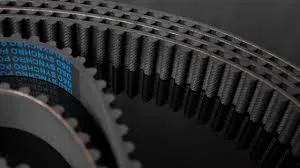- Arabic
- French
- Russian
- Spanish
- Portuguese
- Turkish
- Armenian
- English
- Albanian
- Amharic
- Azerbaijani
- Basque
- Belarusian
- Bengali
- Bosnian
- Bulgarian
- Catalan
- Cebuano
- Corsican
- Croatian
- Czech
- Danish
- Dutch
- Afrikaans
- Esperanto
- Estonian
- Finnish
- Frisian
- Galician
- Georgian
- German
- Greek
- Gujarati
- Haitian Creole
- hausa
- hawaiian
- Hebrew
- Hindi
- Miao
- Hungarian
- Icelandic
- igbo
- Indonesian
- irish
- Italian
- Japanese
- Javanese
- Kannada
- kazakh
- Khmer
- Rwandese
- Korean
- Kurdish
- Kyrgyz
- Lao
- Latin
- Latvian
- Lithuanian
- Luxembourgish
- Macedonian
- Malgashi
- Malay
- Malayalam
- Maltese
- Maori
- Marathi
- Mongolian
- Myanmar
- Nepali
- Norwegian
- Norwegian
- Occitan
- Pashto
- Persian
- Polish
- Punjabi
- Romanian
- Samoan
- Scottish Gaelic
- Serbian
- Sesotho
- Shona
- Sindhi
- Sinhala
- Slovak
- Slovenian
- Somali
- Sundanese
- Swahili
- Swedish
- Tagalog
- Tajik
- Tamil
- Tatar
- Telugu
- Thai
- Turkmen
- Ukrainian
- Urdu
- Uighur
- Uzbek
- Vietnamese
- Welsh
- Bantu
- Yiddish
- Yoruba
- Zulu
דצמ . 05, 2024 14:15 Back to list
small machine belts
The Essential Role of Small Machine Belts in Modern Machinery
In the world of mechanical engineering, small machine belts play a crucial role in the functionality and efficiency of various equipment. These belts, often overlooked, are fundamental components that facilitate the transmission of power between different parts of a machine. From household appliances to industrial machinery, small machine belts serve as the link that enables operations across a plethora of applications.
Understanding Small Machine Belts
Small machine belts, typically made from durable materials such as rubber, polyurethane, or leather, are designed to connect pulleys and drive systems. They come in various shapes and sizes, including flat belts, V-belts, and cogged belts, each engineered for specific purposes. The choice of belt is determined by factors such as size, load capacity, and the nature of the task at hand.
Flat belts, for instance, are utilized where high-speed and low-tension applications are required. They operate effectively in systems where minimal slip is vital. V-belts, characterized by their trapezoidal shape, provide better grip and are commonly found in engines and automotive applications. Cogged belts, with their notched design, facilitate smoother operations in scenarios requiring high torque.
Applications of Small Machine Belts
The applications of small machine belts are vast and varied. In the automotive industry, they are essential for connecting components such as the alternator, water pump, and air conditioning compressor, thereby driving important functions. In manufacturing settings, belts are used in conveyor systems to transport goods and materials efficiently.
Household appliances, including washing machines, vacuum cleaners, and food processors, also rely on small machine belts to perform their functions. For example, in washing machines, belts connect the motor to the drum, allowing for the rotation needed to wash and rinse clothes effectively.
Moreover, the landscaping and gardening industry utilizes small machine belts in tools like lawn mowers, ensuring the blades turn at the appropriate speed for effective cutting
. Even in fitness equipment, such as treadmills and stationary bikes, belts are vital for transferring power from the motor to the moving parts.small machine belts

Maintenance and Replacement
While small machine belts are designed for durability, they are subject to wear and tear over time. Factors such as continuous use, environmental conditions, and incorrect tension can lead to deterioration. Regular inspection and maintenance are essential to ensure that belts function efficiently and to prevent unexpected machinery breakdowns.
Signs that a small machine belt may need replacement include visible cracks, fraying, and slipping during operation. Regular tension adjustments can also extend the life of the belt. It is advisable to consult manufacturer guidelines regarding the maintenance intervals and replacement procedures for optimal performance.
Innovations and Future Developments
As technology progresses, so do the materials and designs used in small machine belts. Innovations in synthetic materials have led to the development of belts that offer greater flexibility, strength, and resistance to environmental factors such as heat and chemicals. Additionally, advancements in manufacturing processes allow for more precise and efficient production of these belts, enhancing their performance characteristics.
Research is also being conducted into the potential of smart belts equipped with sensors that can monitor wear and tear in real-time. Such technology could revolutionize maintenance practices, allowing for predictive maintenance schedules that prevent failures and downtime.
Conclusion
In conclusion, small machine belts may be small components, but their significance in the machinery landscape cannot be overstated. They are indispensable in ensuring the seamless functioning of countless devices and systems. As industries continue to evolve and technology advances, the importance of these belts will only grow. By understanding their functions, applications, and maintenance needs, we can appreciate the integral role they play in our daily lives and in the machinery that drives our industries forward.
-
Korean Auto Parts Timing Belt 24312-37500 For Hyundai/Kia
NewsMar.07,2025
-
7PK2300 90916-T2024 RIBBED BELT POLY V BELT PK BELT
NewsMar.07,2025
-
Chinese Auto Belt Factory 310-2M-22 For BMW/Mercedes-Benz
NewsMar.07,2025
-
Chinese Auto Belt Factory 310-2M-22 For BMW/Mercedes-Benz
NewsMar.07,2025
-
90916-02660 PK Belt 6PK1680 For Toyota
NewsMar.07,2025
-
drive belt serpentine belt
NewsMar.07,2025

